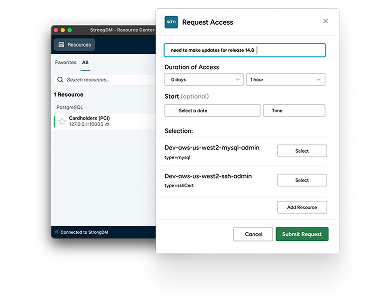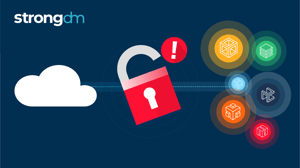From Authentication to Authorization: The KPI Set Every Board Needs


Written by
Tim PrendergastLast updated on:
November 24, 2025Reading time:
Contents
Built for Security. Loved by Devs.
- Free Trial — No Credit Card Needed
- Full Access to All Features
- Trusted by the Fortune 100, early startups, and everyone in between
The board called. They want proof, not platitudes. So, how do you demonstrate that your security controls are actually reducing risk, accelerating recovery, and keeping the business moving? You prove it with real-time authorization. I recently sat down with Richard Stiennon of IT-Harvest to discuss the industry’s shift from authentication to authorization.
As the network perimeter thins, the identity perimeter remains. And in this new reality, authentication alone is an incomplete story—it tells you who someone is, not what they’re allowed to do. Today’s environment demands live authorization: continuous, context-rich decisions that govern what every user, machine, and agent can do the moment they try to do it.
Why Authorization Is the New Control Plane
Perimeter controls were built for offices, data centers, and predictable network paths. Today it is hybrid clouds, distributed teams, and agentic AI acting at machine speed. A static check at login does not reflect the reality of live operations. Instead, the control that really matters is the decision made at the moment of action. That is where identity control plane thinking begins to pay off.
For leaders, this is not a tooling debate. It is accountability. If stolen credentials remain a leading route into enterprise infrastructure, then the answer is to narrow what any identity can do, shorten how long it can do it, and verify the action against context. The right zero trust framework turns that into policy. And, in turn, the right cyber risk visibility turns policy into numbers a board can understand. Let’s break it down into steps.
Building a KPI Framework for Identity-First Security
A good framework demonstrates progress toward real-time authorization without becoming overly detailed or resembling a product manual. The board cares about the why more than the how almost every time, so tie your scorecard to outcomes that matter to a board: fewer credential-led incidents, faster containment, cleaner audits, higher availability on critical services. You should also align terminology with NIST 800-207 and the CISA Zero Trust Maturity Model so your identity governance looks familiar to auditors and partners. Above all, keep the list small and repeatable.
Measure reduction in standing credentials
The first step is to remove permanent privilege. Track your Zero Standing Privilege rate and Just-in-Time access coverage on privileged sessions to highlight the reduction in overlooked or overprivileged access. The target of this initiative is clear: assign more sessions with ephemeral rights, fewer with long-lived keys. For maximum impact, express it as a percentage of privileged sessions delivered through JIT controls. As this number rises, credential risk and audit burden tend to fall because there is less to rotate, store, or accidentally share in the first place. This is the cleanest signal that your privileged account security is maturing.
Quantify coverage of critical assets
Not all systems are equal. Define the crown-jewel set and track the percentage fronted by real-time continuous authorization with full recording. While you’re at it, add a simple view of privileged session monitoring on those assets so you can say with confidence which systems are governed at the action level across hybrid cloud security. This is both an operational safeguard and a fiduciary responsibility. It demonstrates that identity-first controls safeguard the systems that are most critical to revenue, reputation, and compliance.
Audit drift, shadow access, and hygiene
Even good designs collect debris. Over time, roles expand, projects end, and emergency access lingers. You can combat this by measuring the mean time to remediate (MTTR) over-entitlement and the number of orphaned secrets or unbrokered pathways you clean up each quarter. You should also treat shadow access as a visible metric, not an anecdote. The point is not to shame teams, but rather to establish a steady cycle of entitlement management and identity hygiene, allowing board confidence to grow with each quarter of clear reduction. These are the quiet numbers that keep audits boring.
Extend oversight to machine and agent identities
Welcome to 2025, where enterprises are increasingly relying on non-human actors, such as AI agents. Showcase the non-human actors by tracking the percentage of machines and agents with unique identities, scoped policies, rotation schedules, and a working kill switch. From there, you can record how often high-impact agent actions are reviewed before or after execution. As AI security matures, this line in the scorecard proves you treat automation with the same care as humans. It also prepares your programe for identity automation at scale without ceding control.
Turning KPIs Into Board-Level Strategy
A board deck should tell a simple story: show them where risk is reducing, where control is improving, and where investment unlocks more progress. Use a compact dashboard with traffic-light status and three-month trendlines. Keep labels in business terms. For example:
- Fewer standing credentials on Tier 1 systems lowered insurance queries and cut audit rework.
- Faster approvals on routine changes improved deployment lead time without raising incidents.
- Higher coverage of action-level control on payments systems reduced exceptions in the last compliance cycle.
As always, the money is the motive. By translating these gains into operational and financial language, it’s easy to quantify and prove fewer escalations, lower remediation cost, faster delivery, and steady compliance. These simple moves highlight security performance indicators as living commitments rather than one-off reports.
When the board can see cause and effect, cyber risk reporting turns into prioritization rather than argument. That is where reliable funding comes from, and it is how you make the case for continued work on identity-first controls and security ROI.
Final Thoughts: Measurable Trust Is the Next Security Frontier
At the end of the day, identity may be the control plane, but authorization is the proof. Organizations that measure least standing privilege, broader coverage on critical assets, and higher-quality decisions move faster and get breached less. They convert principle into practice and practice into numbers that leaders can act on.
The shift from authentication to authorization is not just a technical choice. It is a leadership choice that says trust should be earned per action, not granted by default. That mindset builds resilience faster than any single tool. It also answers the question boards now ask most often: how do we know it is working?
Next Steps
StrongDM unifies access management across databases, servers, clusters, and more—for IT, security, and DevOps teams.
- Learn how StrongDM works
- Book a personalized demo
- Start your free StrongDM trial

Categories:

About the Author
Tim Prendergast, Chief Executive Officer (CEO), before joining StrongDM, Tim founded Evident.io—the first real-time API-based cloud security platform. In 2018, Palo Alto Networks (PANW) acquired Evident.io, and Tim joined the executive team at PANW. As the first Chief Cloud Officer, Tim helped outline GTM and product strategy with the C-suite for the cloud business. Tim also served as the principal architect for Adobe's Cloud Team, designing and scaling elastic AWS infrastructure to spark digital transformation across the industry. Tim’s love for innovation drives his interest as an investor in true market disrupters. He enjoys mentoring startup founders and serving as an advisor.
You May Also Like




